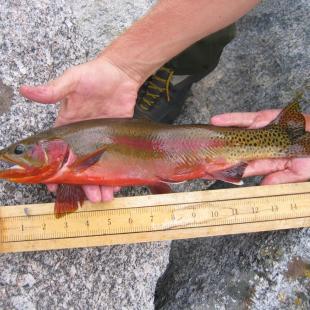The Wyoming toad was once abundantly found in the Laramie Basin of southeastern Wyoming, but in the 1970s an alarming population decline occurred. In 1984 it was listed as a Federally Endangered species. In 1985 the toad was believed to be extinct, however, in 1987, a single population was found near the Laramie Plains lakes. This population experienced a crash in 1989. In the late 1900s, a few toads from Mortenson Lake were captured for captive breeding purposes to help recover this species from near extinction. All Wyoming Toads, both in the wild and in captive breeding programs, are descendants of the few Mortenson Lake toads brought into captivity.

Physical Characteristics
The topside of an adult Wyoming toad varies in color, ranging from a dark brown to green, and even gray. The underside of their body, is typically a creamy-white color. The Wyoming toad has small, rounded bumps covering their body, with various blotches of color intermixed. At the time of breeding, males look slightly different than the females due to the presence of nuptial pads and a dark throat patch. The tadpoles are all black and have rounded bodies and eggs are black in color and laid in long strings.

Wyoming toad management
The Wyoming Toad Recovery Team, which consists of various agencies and collaborators, are hard at work providing scientific data and studies to help facilitate the recovery of the Wyoming toad. The captive breeding program in combination with captive-bred reintroductions are also a major part of Wyoming toad conservation efforts.

Wyoming Toad Reproduction
Female Wyoming toads lay strings of up to several thousand eggs in shallow water. Egg strings are fertilized immediately by males. They will usually develop into tadpoles within 3-6 days. Throughout the summer, the tadpole will experience metamorphosis and turn into toadlets, and eventually adult toads.
Where to find












